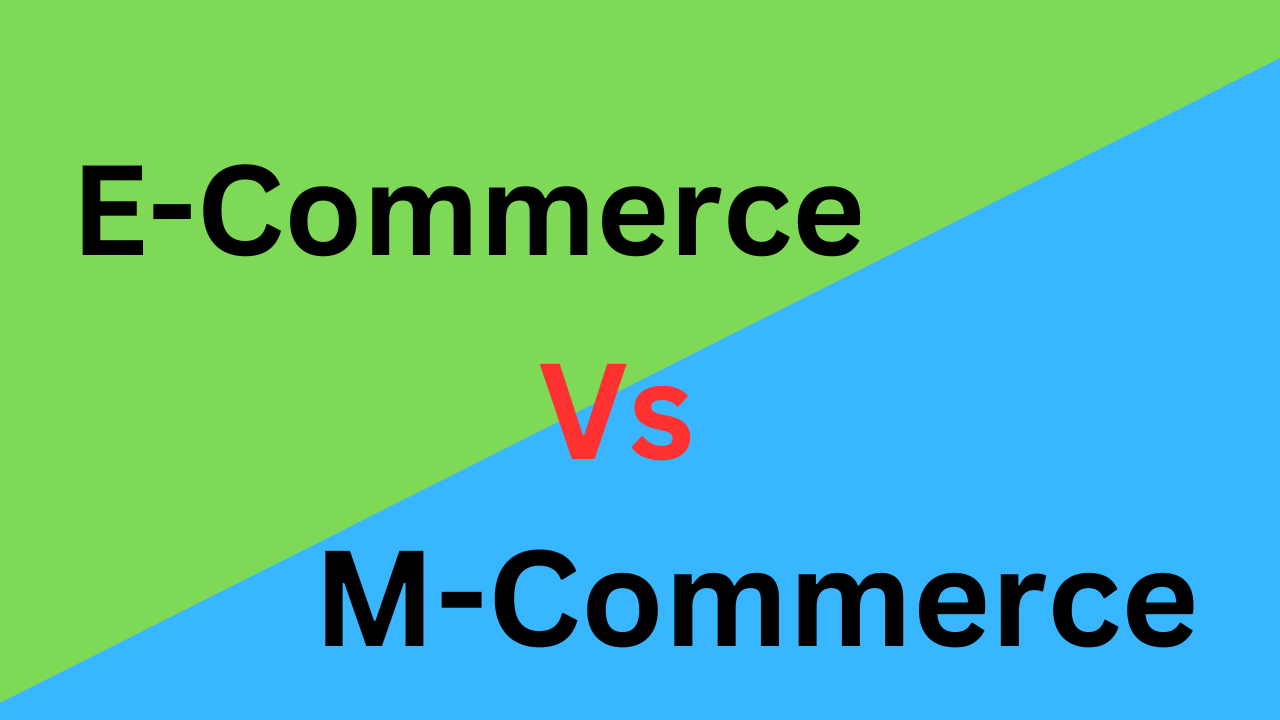What is the main difference between E-Commerce and M-Commerce? E-commerce refers to the act of buying and selling products electronically using the internet, while M-commerce is the buying and selling products mobile phones or handheld devices.
Advancement in technology has made M-commerce and E-commerce popular. They allow people to access a wide range of products and order them from the comfort of their homes. But it can be confusing to tell the difference between M-commerce and E-commerce.
We wrote this article to highlight the difference between these two terms. The disadvantages of advantages of E-commerce and M-commerce will also help uncover the hidden differences. Take the time to read the entire blog post.

Difference Between E-Commerce and M-Commerce With Table
| Basic Terms | E-Commerce | M-Commerce |
| Meaning | It is an abbreviation of electronic commerce | It is an abbreviation of mobile commerce. |
| Devices | Desktop and laptop | Mobile phones |
| Age | Older concept | Newer concept |
| Scope | Superset | Subset |
| Use of Internet | Mandatory | Not mandatory |
| Developed | 1970s | 1990s |
| Reachability | Low reachability | High reachability |
| Location Tracking | Limited due to non-portability of devices. | Unlimited since Wi-Fi and GPS tech on mobile can track location. |
| Push Notification | Fails | Can be achieved. |
| Payment Option | Credit card and other traditional payment mode. | Mobile wallet, contactless payments, credit and debit card. |
| Examples | Amazon, Flipkart, Quikr, Olx websites. | Mobile banking like paytm, in-app purchasing Amazon mobile app. |
What Is E-Commerce?
E-commerce stands for electronic commerce. It refers to the buying and selling of goods and services over the internet. It eliminates the need for physical storefronts by facilitating transactions through digital platforms.
E-commerce encompasses various models, including B2C (business-to-consumer), B2B (business-to-business), C2C (consumer-to-consumer), and more. Transactions are often facilitated through secure payment gateways, ensuring the safety of financial information.
Key elements of successful e-commerce include user-friendly websites, efficient supply chain management, secure payment processing, and responsive customer support.
What Is M-Commerce?
Mobile commerce, or m-commerce refers to the buying and selling of goods and services using wireless handheld devices like smartphones and tablets. It’s an extension of e-commerce that leverages the portability and convenience of mobile devices.
M-commerce has gained prominence with the rapid growth of mobile technology and internet connectivity. It enables consumers to browse online stores, make purchases, and conduct financial transactions through dedicated apps or mobile-responsive websites.
The integration of mobile wallets, digital payment methods, and one-click checkouts has streamlined the purchasing process. It has transformed the way businesses engage with customers, enabling them to deliver targeted marketing campaigns and provide real-time customer support.
Businesses must prioritize mobile-friendly designs, optimize for various screen sizes, and ensure secure payment processing to foster trust among mobile-savvy consumers. It will also make these business more successful.
Main Difference Between E-Commerce and M-Commerce
- E-commerce is the performance of business activities with the use of internet while M-commerce is a sort of commercial transaction is transacted with the use of cellular devices.
- E-commerce is an older concept while M-commerce is a newer concept.
- E-commerce was developed in 1970s while M-commerce in 1990s.
- E-commerce is a superset of m-commerce while M-commerce is a subset of e-commerce.
- E-commerce internet is mandatory while M-commerce internet is not mandatory.
Similarities Between M-Commerce and E-Commerce
- Both M-Commerce and E-Commerce involve buying and selling goods or services electronically.
- Both operate through online platforms such as websites and apps.
- Both provide businesses with the ability to reach a global audience.
- Both offer various online payment methods including credit/debit cards.
- Both platforms offer a wide range of products and services.
- Both M-Commerce and E-Commerce provide convenience to customers by allowing them to shop anytime.
- Both platforms facilitate customer feedback and reviews.
- Both platforms use online marketing strategies.
- Customers can track their orders in real time on both platforms.
- Both M-Commerce and E-Commerce prioritize data security measures to protect customer information and financial details.
- Both platforms offer customer support channels.
- Both have evolved with technology advancements.
Final Thoughts from Experts
E-Commerce and M-Commerce share several common traits in their digital retail landscapes. But they diverge significantly due to the distinct platforms they operate on.
E-Commerce is conducted through traditional computers, offers a broader screen space for comprehensive browsing, detailed product descriptions, and intricate website design.
On the other hand, M-Commerce, carried out via mobile devices, prioritizes compactness and portability, necessitating simpler interfaces and concise product information.
The user experience varies since E-Commerce caters to extended shopping sessions with potential distractions, while M-Commerce focuses on quick interactions suited for fragmented time intervals.
Payment processes also differ, with E-Commerce relying on conventional online methods and M-Commerce capitalizing on mobile wallet technology for swift transactions.
E-Commerce often leverages search engines and social media, while M-Commerce thrives on location-based promotions and personalized notifications. Security measures remain crucial for both, but M-Commerce faces additional challenges due to device vulnerabilities.
People Who Read This Also Read:
- Difference Between E-Commerce and E-Business
- Difference Between Traditional and Modern Trade.
- Difference Between Trade Off and Opportunity Cost.